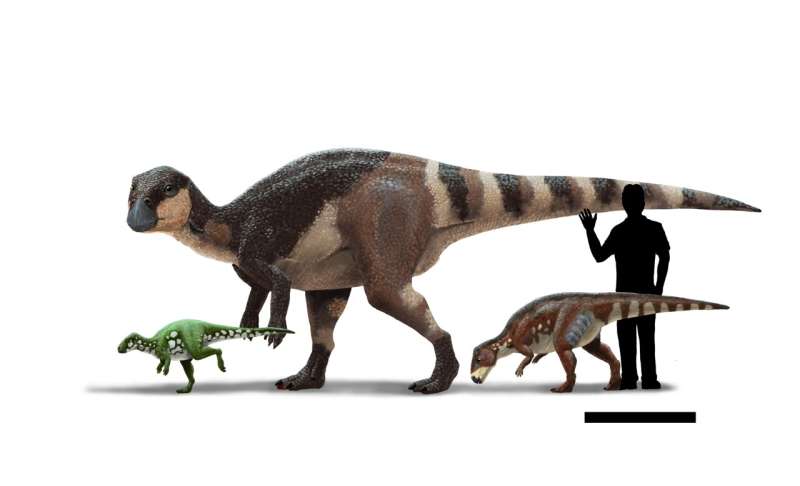This article has been reviewed according to Science X's editorial process and policies. Editors have highlighted the following attributes while ensuring the content's credibility:
fact-checked
trusted source
proofread
Europe's very own dinosaurs: The enigmatic Late Cretaceous rhabdodontids

When you think of dinosaurs, you might automatically imagine iconic dinosaurs such as Tyrannosaurus and Triceratops. But at the same time when these were stomping on the ancient coastal plains of North America, some of their very distant cousins were reigning over Europe's lands.
During the Late Cretaceous (between 100 and 66 million years ago), Europe was an extensive archipelago with numerous small and large islands situated in a shallow tropical sea, the so-called Late Cretaceous European Archipelago.
The dinosaur groups that lived on these islands were very different from those of other continents, often being much smaller than their mainland relatives. These European dinosaurs include small and medium-sized carnivorous theropods, armored ankylosaurs, long-necked sauropods, duck-billed hadrosaurs, and rhabdodontids.
Arguably one of the most important of these European dinosaur groups is the family Rhabdodontidae, which groups together the most common medium-sized herbivores of the Late Cretaceous European Archipelago. A joint research team from the Universities of Tübingen (Germany), Budapest (Hungary) and Bucharest (Romania) recently reviewed what we know about these peculiar dinosaurs in a new paper published in the journal Fossil Record.
Generally, rhabdodontid dinosaurs were small to medium-sized animals with an overall body length of approximately 2–6 m. "They were probably habitually bipedal herbivores, characterized by a rather stocky build, with strong hind limbs, short forelimbs, a long tail, and a comparatively large, triangular skull that tapers anteriorly and ends in a narrow snout," explains Felix Augustin, lead author of the study in Fossil Record.
"They had a relatively robust skull with strong jaws, large teeth and a pointy beak that was covered in keratin, demonstrating that these dinosaurs were well-adapted to eating tough plants."
In some instances, fossil remains of several individuals of different ages have been found together, indicating that they were gregarious.
Although they died out well before the mass extinction in Western Europe (about 69 million years ago), potentially due to environmental changes that affected the plants they fed on, they survived much longer in Eastern Europe and were among the last non-avian dinosaurs still present before the end of the Cretaceous (66 million years ago).
Interestingly, fossils of rhabdodontids have only been found in Europe and only in rocks ranging in age from 86–66 million years ago, so they were endemic to the Late Cretaceous European Archipelago.
The group currently comprises nine different species from five European countries (France, Spain, Austria, Hungary, and Romania).
"The first rhabdodontid species was scientifically named more than 150 years ago and the last one as recently as November 2022, so, although the group looks back to a long research history, we still have much to learn about it," says Felix Augustin.
"Generally, our portraying of the world of dinosaurs is heavily biased towards the well-known North-American and Asian dinosaur faunas," he adds.
Dinosaur fossils from the Late Cretaceous are much rarer in Europe than in North America or Asia, and thus far no complete skeleton of a rhabdodontid has been described. Even though they were so abundant and common in the Upper Cretaceous of Europe, several key aspects about them remain poorly known, including their detailed body proportions, their posture and locomotion, as well as their feeding behavior.
"In the past decades, a wealth of new, and often well-preserved, rhabdodontid fossils has been discovered throughout Europe, the majority of which still remains to be studied," says Felix Augustin. "A joint research project is currently underway to study the available fossil material in order to gain new insights into the evolution and lifestyle of these fascinating yet still poorly known dinosaurs."
More information: Felix J. Augustin et al, The Rhabdodontidae (Dinosauria, Ornithischia), an enigmatic dinosaur group endemic to the Late Cretaceous European Archipelago, Fossil Record (2023). DOI: 10.3897/fr.26.108967
Provided by Pensoft Publishers




















